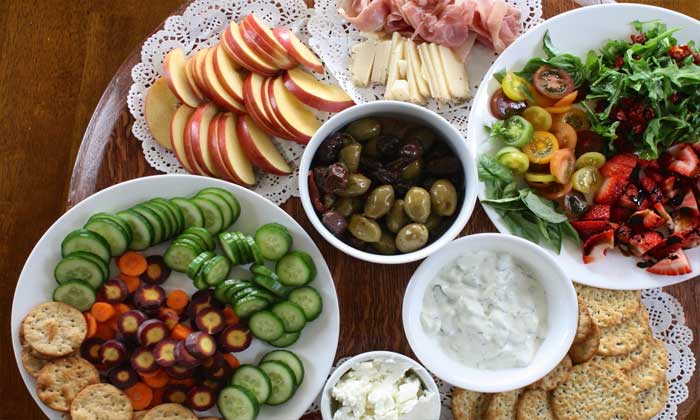
Terry Nicholls is the author of the eBook “Food Safety: Protecting Your Family From Food Poisoning”. In addition, he writes from his own experiences in trying to start his own home-based business.
8 Easy Ways To Protect Your Family From Food Poisoning
1. Shop Smart
Prevention of food poisoning starts with your trip to thesupermarket. Pick up your packaged and canned foods first.Buy cans and jars that look perfect. Do the cans have dents?Don’t buy canned goods that are dented, cracked, or bulging.These are the warning signs that dangerous bacteria may begrowing in the can. Are the jars cracked? Do they have lidsthat are loose or bulging? The food may have germs that canmake you sick. Look for any expiration dates on the labelsand never buy outdated food. Likewise, check the “use by” or”sell by” date on dairy products such as cottage cheese,cream cheese, yogurt, and sour cream and pick the ones thatwill stay fresh longest in your refrigerator.
2. Store Food Properly
After shopping, get home as soon as you can. Then put foodinto the refrigerator or freezer right away. Make sure toset the refrigerator temperature to 40 F and the freezer to0 F. Check temperatures with an appliance thermometer. Besure to refrigerate or freeze perishables, prepared foods,and leftovers within 2 hours of shopping or preparing. Placeraw meat, poultry, and seafood in containers in therefrigerator, to prevent their juices from dripping on otherfoods. Raw juices may contain harmful bacteria. Eggs alwaysgo in the refrigerator.
3. Prepare Food Safely
Wash hands and surfaces often. Bacteria can be spreadthroughout the kitchen and get onto cutting boards, utensilsand counter tops. To prevent this, wash hands with soap andhot water before and after handling food, and after usingthe bathroom, changing diapers, or handling pets. Washeverything else before and after it touches food. Use papertowels or clean cloths to wipe kitchen surfaces or spills.Wash cloths before you use them again for anything else. Usethe hot cycle of your washing machine. Wash cutting boards,dishes, utensils, and counter tops with hot, soapy waterafter preparing each food item and before you go on to thenext item. A solution of 1 teaspoon of bleach in 1 quart ofwater may be used to sanitize washed surfaces and utensils.
4. Cook Food Thoroughly
Cook food thoroughly until it is done. Cooked red meat looksbrown inside. Poke cooked chicken with a fork. The juicesshould look clear, not pink. Dig a fork into cooked fish.The fish should flake. Cooked egg whites and yolks are firm,not runny. Use a food thermometer to check the internaltemperature of meat, poultry, casseroles and other food. Usea thermometer with a small-diameter stem. Insert thethermometer 1 to 2 inches into the center of the food andwait 30 seconds to ensure an accurate measurement. Checktemperature in several places to be sure the food is evenlyheated.
5. Chill Food Promptly
Place food in the refrigerator. Don’t overfill therefrigerator. Cool air must circulate to keep food safe.Divide food and place in shallow containers. Slice roastbeef or ham and layer in containers in portions for service.Divide turkey into smaller portions or slices & refrigerate.Remove stuffing from cavity before refrigeration. Placesoups or stews in shallow containers. To cool quickly, placein ice water bath and stir. Cover and label cooked foods.Include the preparation date on the label.
6. Transport Food Safely
Keep cold food cold. Place cold food in cooler with a coldsource such as ice or commercial freezing gels. Use plentyof ice or commercial freezing gels. Cold food should be heldat or below 40 F. Hot food should be kept hot, at or above140 F. Wrap well and place in an insulated container.
7. Serve Food The Safe Way
Use clean containers and utensils to store and serve food.When a dish is empty or nearly empty, replace with freshcontainer of food, removing the previous container. Placecold food in containers on some ice. Hold cold foods at orbelow 40 F. Food that will be portioned and served shouldbe placed in a shallow container. Place the container insidea deep pan filled partially with ice to keep food cold. Oncefood is thoroughly heated on stovetop, oven or in microwaveoven, keep food hot by using a heat source. Place food inchafing dishes, preheated steam tables, warming trays and/orslow cookers. Check the temperature frequently to be surefood stays at or above 140 F.
8. Complete Your Meal Experience Safely
Cooked foods should not be left standing on the table orkitchen counter for more than 2 hours. Disease-causingbacteria grow in temperatures between 40 F and 140 F.Cooked foods that have been in this temperature range formore than 2 hours should not be eaten. If a dish is to beserved hot, get it from the stove to the table as quickly aspossible. Reheated foods should be brought to a temperatureof at least 165 F. Keep cold foods in the refrigerator oron a bed of ice until serving. This rule is particularlyimportant to remember in the summer months. Leftovers shouldbe refrigerated as soon as possible. Meats should be cut inslices of 3 inches or less and all foods should be stored insmall, shallow containers to hasten cooling. Be sure toremove all the stuffing from roast turkey or chicken andstore it separately. Giblets should also be storedseparately. Leftovers should be used within 3 days. Discardany food left out at room temperature for more than 2 hours.
8 Easy Ways To Protect Your Family From Food Poisoning






